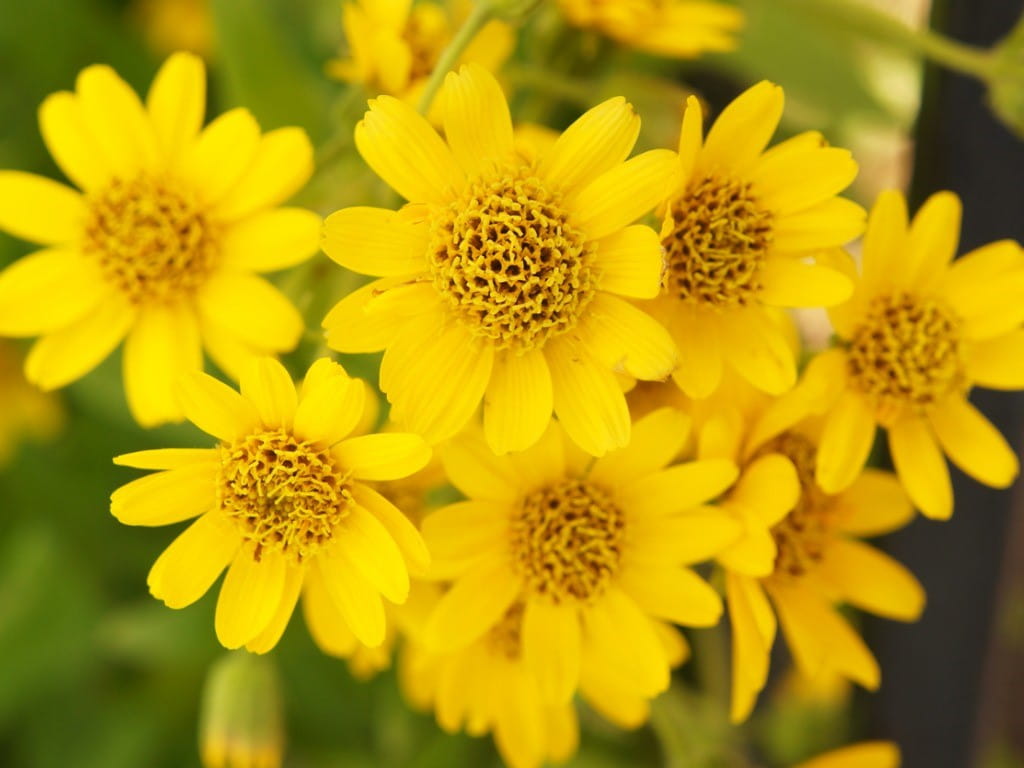Caution When Using Arnica Products

The Bottom Line
Arnica is used as a flavoring for food and drinks and as a homeopathic treatment for many ailments. It is fairly safe when used for short periods or in very diluted forms. However, eating the plant, the topical creams or ointments, or the plant extracts or oils can result in serious poisoning.

The Full Story
Arnica is a flowering herb in the sunflower family that closely resembles daisies. It grows in Siberia, central Europe, Canada, and the northern United States. The yellow/orange flowers have been used as far back as the 1500s to treat a wide range of conditions including bruises, sprains, muscle aches, wounds, joint pain, swelling, and burns. It is most commonly available in topical creams and ointments that can be applied to the skin. Arnica is also available as very dilute, homeopathic products that can be taken by mouth.
No one really knows how Arnica works. It is thought that the chemicals that are medically useful are located in the flower heads and in the lower stems of the plant. There is some medical evidence showing that these Arnica chemicals might help with inflammation and pain, but they can also limit a person's ability to form blood clots, increasing their risk for serious bleeding. Because of its ability to prevent clots from forming, Arnica should not be taken with other medications or herbal products that can thin the blood like aspirin, clopidogrel, warfarin, enoxaparin, apixaban, dabigatran, rivaroxaban, ginger, garlic, or ginseng, to name a few. If you are taking Arnica and you have an upcoming surgery, let your surgeon know and stop taking the Arnica at least 2 weeks before the procedure. If you aren't sure if it is safe to take Arnica with your daily medications, ask your pharmacist to check for interactions.
Arnica is thought to have limited toxicity when applied to unbroken skin for short periods of time or when taken by mouth in very dilute forms. However, the Canadian government was sufficiently concerned about the safety of Arnica that it banned its use as an ingredient in food. Large amounts of undiluted Arnica can cause irritation or damage to the skin, mouth, throat, and stomach, as well as vomiting, diarrhea, rashes, shortness of breath, fast heartbeat, high blood pressure, damage to the heart and other organs, increased bleeding, coma, and death. Arnica is NOT safe to use if you are pregnant or breastfeeding. Drinking Arnica teas or tinctures can result in miscarriage.
If you suspect someone has been exposed to Arnica and is having a problem, check the webPOISONCONTROL® online tool for guidance or call Poison Control at 1-800-222-1222.Lindsy Liu, PharmD
Certified Specialist in Poison InformationPoisoned?
Call 1-800-222-1222 or
Prevention Tips
- Ask your pharmacist to check for drug interactions before you start using Arnica.
- Let your children know that no part of the plant should be eaten.
- Only use topical Arnica creams and ointments for short periods of time.
- Store all Arnica products out of the reach and sight of children.
This Really Happened
A 9-day-old, breast-fed infant boy was brought to an ER 48 hours after his mother began drinking Arnica tea. He had jaundice and severe hemolysis (destruction of red blood cells). He was treated with two blood transfusions and recovered fully (from Miller, 2009).
A 24-year-old woman drank a cup of tea prepared from Arnica flowers and developed heart palpitations, fast heartbeat, and diarrhea 2 hours later. She was given intravenous fluids in a hospital and recovered fully (from Canders, 2014).
For More Information
A.D.A.M. Arnica [internet]. Seattle (WA): Ebix; 24 Mar 2015 [cited 16 Aug 2019].
WHO monographs on selected plants, vol 3. Geneva: World Health Organization; 2007. Flos Arnicae; p.77-87.References
Arnica. Natural Medicines Comprehensive Database [Internet database]. Stockton (CA): Therapeutic Research Center; 2014 [cited 4 Aug 2019].
Canders CP, Stanford SR, Chiem AT. A dangerous cup of tea. Wilderness Environ Med 2014;25(1):111-2.
Topliff A, Grande G. Significant toxicity after the ingestion of Arnica [abstract]. Clin Toxicol 2000;38(5):518.
Poisoned?
Call 1-800-222-1222 or
Prevention Tips
- Ask your pharmacist to check for drug interactions before you start using Arnica.
- Let your children know that no part of the plant should be eaten.
- Only use topical Arnica creams and ointments for short periods of time.
- Store all Arnica products out of the reach and sight of children.
This Really Happened
A 9-day-old, breast-fed infant boy was brought to an ER 48 hours after his mother began drinking Arnica tea. He had jaundice and severe hemolysis (destruction of red blood cells). He was treated with two blood transfusions and recovered fully (from Miller, 2009).
A 24-year-old woman drank a cup of tea prepared from Arnica flowers and developed heart palpitations, fast heartbeat, and diarrhea 2 hours later. She was given intravenous fluids in a hospital and recovered fully (from Canders, 2014).
